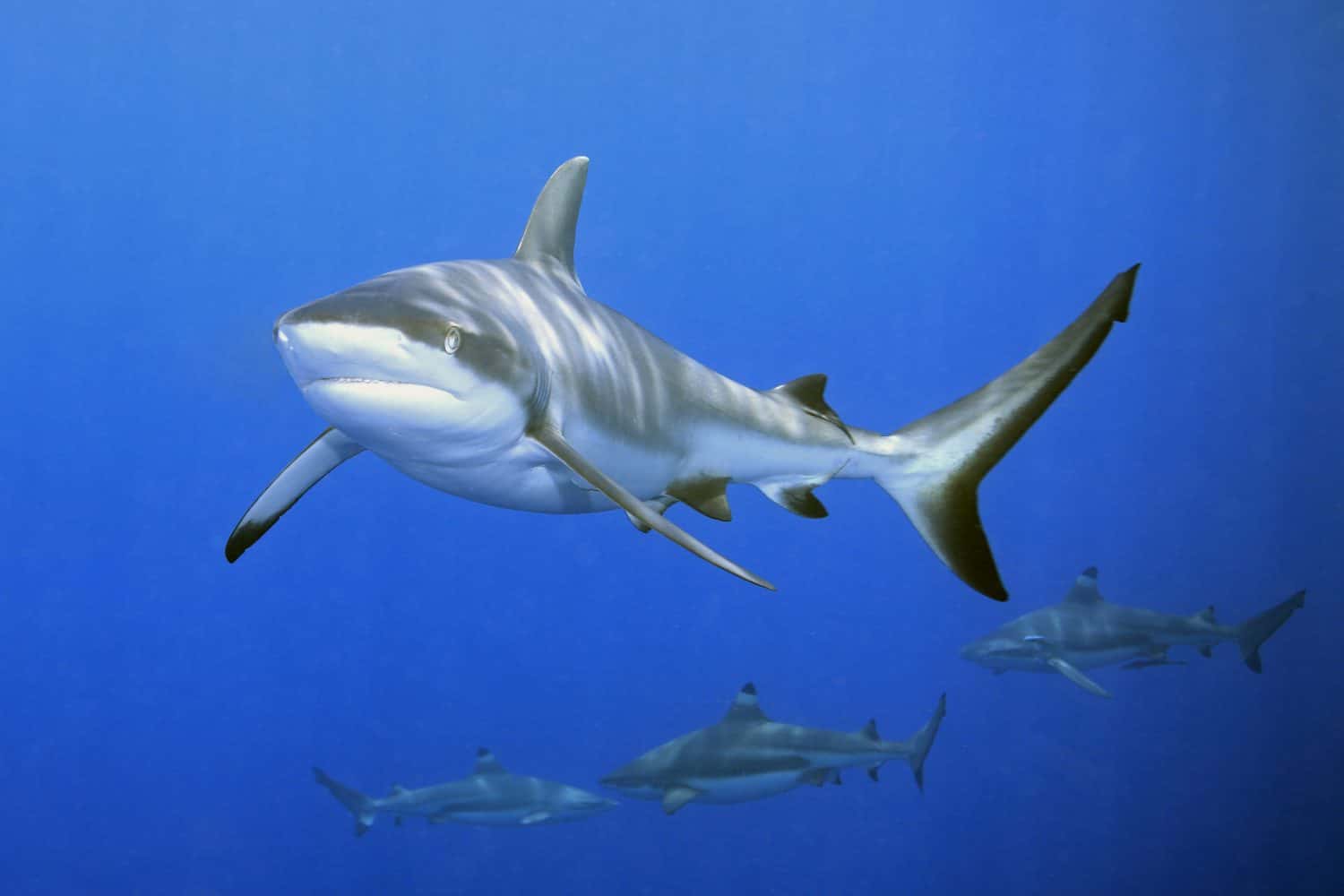True silent hunters, sharks do not vocalize. Yet, they can communicate with each other through body language effectively. By communicating via body language, sharks can communicate intent, express aggression or defensiveness, and reduce injury-causing conflict with other sharks.
So, how do sharks communicate with each other? Read on to find out!
How Do Sharks Communicate: Body Language
Sharks primarily rely on body posturing and angles of approach to communicate with each other. While body language can be species-specific, many signals overlap across species. To express themselves, dozens of sharks will change the position of their back, fins, tail, head, snout, and even inflate their gills. These signals are part of agonistic displays. These displays occur in competitive or conflictual situations, including aggressive, placating, and defensive behaviors.
In addition to specific postures, sharks often swim with distinct patterns during agonistic displays. These displays include exaggerated side-to-side swimming, rolling, and spiral looping.
How Do Sharks Communicate: Agonistic Displays in Non-Competitive Environments
During threat displaying, an animal may act aggressively or defensively in response to another animal’s actions. The goal of these agonistic displays is to ritualize aggression in a manner that resolves conflict without resorting to injury-causing fighting. Engaging in physical combat is extremely risky and energy-intensive for most animals. Therefore, agonistic displays are much less risky. Understanding the threat displays of sharks is crucial for ocean divers as sharks will display these behaviors towards humans when feeling threatened.
Grey Reef Sharks (Carcharhinus amblyrhynchos)
Grey reef sharks (Carcharhinus amblyrhynchos) are the most widely known and studied for their distinctive agonistic displays. When acutely threatened, grey reef sharks may feature an exaggeratedly hunched back, raised snout, flexed caudal fin (tail), and downward-pointing pectoral fins. These sharks typically display this behavior outside the context of feeding, meaning they likely produce this agonistic display when feeling physically threatened or territorial.

This grey
reef shark
may be displaying agonistic signals toward a camera person. Note the much more horizontal pectoral fins of the sharks in the background.
©cbpix/Shutterstock.com
White Sharks (Carcharodon carcharias)
In 2015, cage divers documented the first known recording of agonistic, exaggerated pectoral fin depression of a white shark (Carcharodon carcharias) off Guadalupe Island, Mexico. Researchers published a study of this recording in 2023 with Scientific Research Publishing. While commonly observed in several reef shark species, this threat display behavior is finally confirmed in white sharks. The paper raises ethical questions about the possible stressors cage diving may cause for the white sharks baited in the area.
Tiger Shark (Galeocerdo cuvier)
When feeling threatened not in the presence of a food source, tiger sharks (Galeocerdo cuvier) often display downward pointing pectoral fins, exaggerated tail movements, and a gaping mouth. They may also open and close their mouths slowly, exaggeratedly. Tigers sharks, like reef sharks, are mainly known to exhibit these agonistic displays when threatened by not only sharks but also the presence of divers. If a diver sees a shark exhibiting this body language, it is a sign to calmly but swiftly increase the distance from the shark. If particularly threatened, they may also ram the other shark or person before rapidly withdrawing.

This
tiger
shark displays agonistic signals, possibly toward a camera person, with downward-pointing pectoral fins and a gaping mouth.
©DannyTorobekovArt/Shutterstock.com
Basking Sharks (Cetorhinus maximus)
Basking sharks (Cetorhinus maximus) are filter feeders. Their giant mouths are completely open when feeding as they pull in water filled with microscopic organisms. In contrast to predators like tiger sharks, who frequently gape their mouths when threatened, when basking sharks feel threatened, their agonistic displays involve tightly closing their mouths. They will also orient their pectoral fins downward in an exaggerated position.
How Do Sharks Communicate: Agonistic Displays in Competitive Environments
Several sharks engage in agonistic displays in competitive environments, such as when food is present. The body language of sharks associated with a competitive environment tends to differ from agonistic signals in non-competitive, non-food-oriented environments.
White Sharks (Carcharodon carcharias)
Agonistic displays of white sharks in competitive environments include tail slapping and breaching. They also display repetitive aerial mouth gaping. This repetitive aerial gaping (RAG) is characterized by rhythmic, exaggerated opening and closing of the jaws above the water’s surface. Researchers believe it may be a signal of frustration among white sharks not successful in gaining access to prey, possibly due to the presence of stronger great whites in the immediate area.

Great whites may express frustration in competitive environments by snapping their jaws above the water’s surface.
©Martin Prochazkacz/Shutterstock.com
Sandtiger Sharks (Carcharias taurus)
In competitive contexts, researchers have also observed sand tiger sharks (Carcharias taurus) using whip-like tail lashing at or near the water’s surface directed at other sharks. They may also hold their tails sideways and flex toward a competitor. These signals convey a willingness to compete for food with another shark without immediately engaging in injury-causing conflict.
The photo featured at the top of this post is © solarseven/Shutterstock.com
Thank you for reading! Have some feedback for us? Contact the AZ Animals editorial team.






